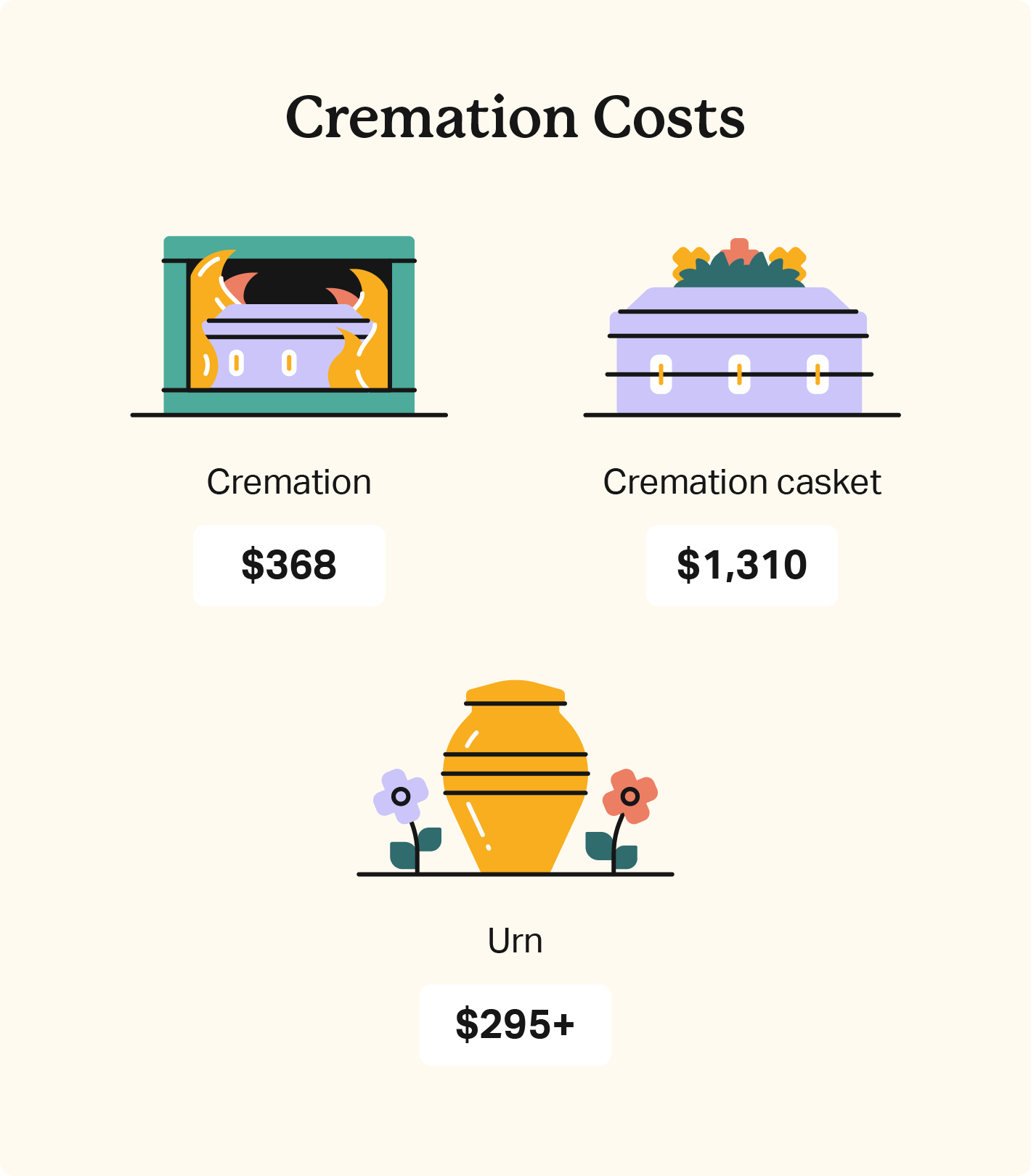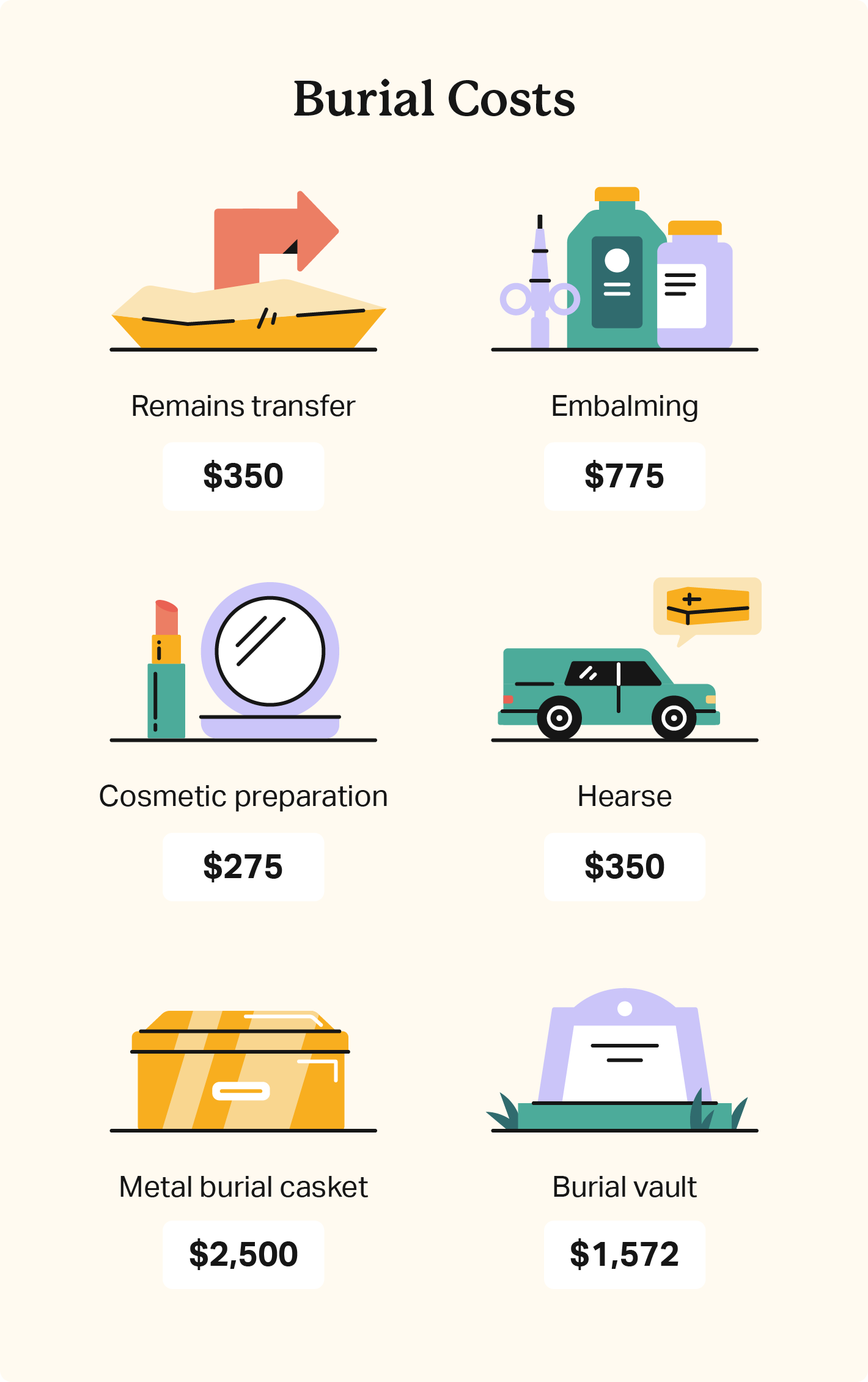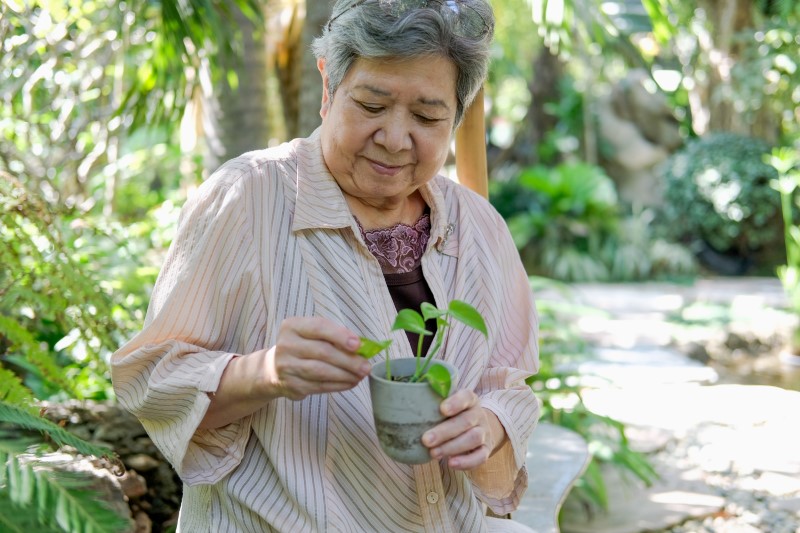Choosing the after-death care of a loved one’s body is a difficult, deeply personal decision. There are several important factors to cover when you compare cremation vs. burial services, including:
- Cost: Cremations are 12.21% cheaper than burials in the U.S.
- Culture: Culture and religion heavily influence funeral practices.
- Sustainability: Each practice has a different environmental impact.
- Memorials: Burials are typically permanent resting places, while ashes can be scattered, stored, or repurposed.
Below, we cover these key considerations and answer your questions to help you make the right decision.
Cremation Process And Memorials
Cremation uses heat, chemicals, and other means to reduce a body to ash in a relatively short period. Direct cremation is more traditional and uses high heat and flames to cremate the body in one to four hours.
Water cremation is an environmentally-conscious alternative that uses liquids and chemicals to cremate the body in three to 18 hours. The reduced temperatures require less energy and produce sterile ashes better suited for eco-memorials, like green burials.
Regardless of the cremation treatment you choose, the cremation procedure is as follows.
- Identification of the body and cause of death.
- Authorization for cremation.
- Preparation removes jewelry, medical devices, and other inorganic items.
- Cremation reduces the body to ashes.
- Finalization removes remaining inorganic materials and grinds bone fragments and remains to a fine ash.
- Transfer moves the ashes to an urn to return the remains to the authorized family or individual.
The ashes can be kept in a memorial urn, transferred to other urns to share with family, spread in a meaningful location, or even repurposed into jewelry, sculptures, tattoos, and more.
Burial Process And Options
Direct burial is a simple process that places the body into a casket or other vessel before burying them together. Most people are buried in a cemetery or placed in a mausoleum with a ceremony, but natural burial sites and private family cemeteries are alternative options.
While direct burials are simple, they often follow an embalming treatment that preserves the body. This provides extra time for families to make arrangements or host final viewings and funerals before the actual burial.
The burial location is marked with a headstone or other marker. This designates the space as a grave and provides a memorial for friends, family, and loved ones to visit for decades, even centuries to come.
Is It Cheaper To Be Buried Or Cremated?
Direct cremations cost less than direct burials, averaging $2,195 and $5,126 respectively. Generally, the cremation process doesn’t require caskets, gravesites, headstones, or embalming, so it’s cheaper than direct burial.
Processes vary by personal preference, so costs can fluctuate. This is especially true if you’re planning a funeral service, where transportation costs, service fees, flowers, and catering come into play.
Still, the median cost of a funeral with cremation is $6,280 — 37% cheaper than a funeral with burial at $9,995. These savings are a leading contribution to cremation’s increasing popularity.
Factors To Consider
Cost, culture, family, and personal preferences all play a part in your final cremation vs. burial decision. If you’re still looking for guidance, read through the considerations below to weigh all of your options.
Cultural and religious traditions
Cultures and religions handle bodies and the end of someone’s life differently. Many people choose between cremation and burial, considering familial and cultural traditions.
Hindu, Buddhist, and Sikh people traditionally cremate their dead for different reasons.
On the other hand, Islamic, Mormon, and Orthodox Jewish people typically bury bodies. In some cases, cremation is even prohibited or strongly discouraged in these religions.
Traditions also dictate other funeral rites, like Jewish cultures that bury their dead within three days, while Swedish law allows up to one month for burial — and they used to take longer.
Memorial preferences and accessibility
Consider who wants access to a memorial and how you can best accommodate loved ones with your end-of-life decision.
Burial spots are a set location that anyone can visit. U.S. burials are often permanent, so the grave will be there for decades or centuries. However, your burial site may not be accessible for distant loved ones or people with disabilities.
Cremated ashes are more flexible. You can split them among individuals and families to keep or spread as they like. Alternatively, you can place ashes in a columbarium or spread them in a special location to act as a memorial or burial site. However, ashes are often kept privately and may be lost over time as people move or pass themselves.
Environmental impact
Sustainable burial alternatives are increasingly accessible, and a recent survey found that 60% of respondents are interested in green funeral options in 2023. You can make sustainable choices for both burials and cremations to reduce your environmental impact.
Green burials don’t embalm or otherwise treat the body with chemicals, and you can opt for a natural burial site and untreated vessel, like a simple wood casket or linen shroud. This reduces how much chemical pollution a burial releases into the ground.
Environmentally-friendly cremations use chemicals and water instead of high temperatures to reduce remains to ash. This type of cremation requires less energy and produces sterile ashes that are safer for the environment.
End-of-life budget
Funerals are expensive, and covering all of the service and treatment costs can be challenging. Especially if you’re planning for a sudden death or the person doesn’t have insurance.
One of the largest funeral costs is the casket, and a metal burial casket averages $2,500. Burial expenses, including the casket, embalming, and gravesite, are about 12% more expensive than a cremation. So opting for a funeral and cremation can save thousands.
Final Expense Insurance For Burials Or Cremation
Cost is often a deciding factor between cremation vs. burial. While cremation is cheaper, you can plan ahead to cover the cost of your preferred funeral services with final expense life insurance.
Get a quote today to compare costs and coverage to guarantee your funeral expenses are paid for.
- Nationally licensed life insurance agent with over 15 years of experience
- Personal annual production that puts him in the top .001% out of all life insurance agents in the nation.
Anthony Martin is a nationally licensed insurance expert with over 15 years of experience and has personally served over 10,000 clients with their life insurance needs. He frequently authors entrepreneurial and life insurance content for Forbes, Inc.com, Newsweek, Kiplinger, and Entreprenuer.com. Anthony has been consulted as an expert life insurance source for dozens of high-profile websites such as Forbes, Bankrate, Reuters, Fox Business, CNBC, Investopedia, Insurance.com, Yahoo Finance, and many more.
- Nationally licensed life insurance agent with over 19 years of experience
- Best selling Amazon author.
Jeff Root is a nationally licensed life insurance expert with over 19 years of experience. He has personally helped over 3000 clients with their life insurance needs. Jeff is a best-selling Amazon author and the managing partner of a highly successful insurance brokerage that manages over 2,500 licensed insurance agents across the USA. He has been a featured life insurance source for prestigious websites such as Forbes, Bloomberg, MarketWatch, Nerdwallet, and many more.
- Nationally licensed life insurance agent with over 14 years of experience
- Best selling Amazon author of five insurance sales books.
David Duford is a nationally licensed insurance expert with over 14 years of experience. He has personally helped more than 15,000 clients buy life insurance. David has been featured as an expert source for highly authoritative publications such as A.M. Best and Insurancenewsnet. He also runs one of the largest Youtube channels to help aspiring insurance agents serve their clients better.
- Nationally licensed life insurance agent with over 19 years of experience
- Best selling Amazon author.
Jeff Root is a nationally licensed life insurance expert with over 19 years of experience. He has personally helped over 3000 clients with their life insurance needs. Jeff is a best-selling Amazon author and the managing partner of a highly successful insurance brokerage that manages over 2,500 licensed insurance agents across the USA. He has been a featured life insurance source for prestigious websites such as Forbes, Bloomberg, MarketWatch, Nerdwallet, and many more.
- Nationally licensed life insurance agent with over 14 years of experience
- Best selling Amazon author of five insurance sales books.
David Duford is a nationally licensed insurance expert with over 14 years of experience. He has personally helped more than 15,000 clients buy life insurance. David has been featured as an expert source for highly authoritative publications such as A.M. Best and Insurancenewsnet. He also runs one of the largest Youtube channels to help aspiring insurance agents serve their clients better.
Choice Mutual often cites third-party websites to provide context and verification for specific claims made in our work. We only link to authoritative websites that provide accurate information. You can learn more about our editorial standards, which guide our mission of delivering factual and impartial content.
-
cremation’s increasing popularity. https://californiahealthline.org/wp-content/uploads/sites/3/2022/09/2022_Cremation-and-Burial-Report.pdf
-
Jewish cultures. https://rohatynjewishheritage.org/en/culture/death-burial-mourning/
-
Swedish law. https://deadhappy.com/stories/swedish-death-traditions/
-
columbarium. https://www.cem.va.gov/cem/grants/columbarium_cremain_burials.asp
-
recent survey. https://nfda.org/news/statistics
-
median cost of a funeral with cremation. https://nfda.org/news/media-center/nfda-news-releases/id/8134/2023-nfda-general-price-list-study-shows-inflation-increasing-faster-than-the-cost-of-a-funeral











